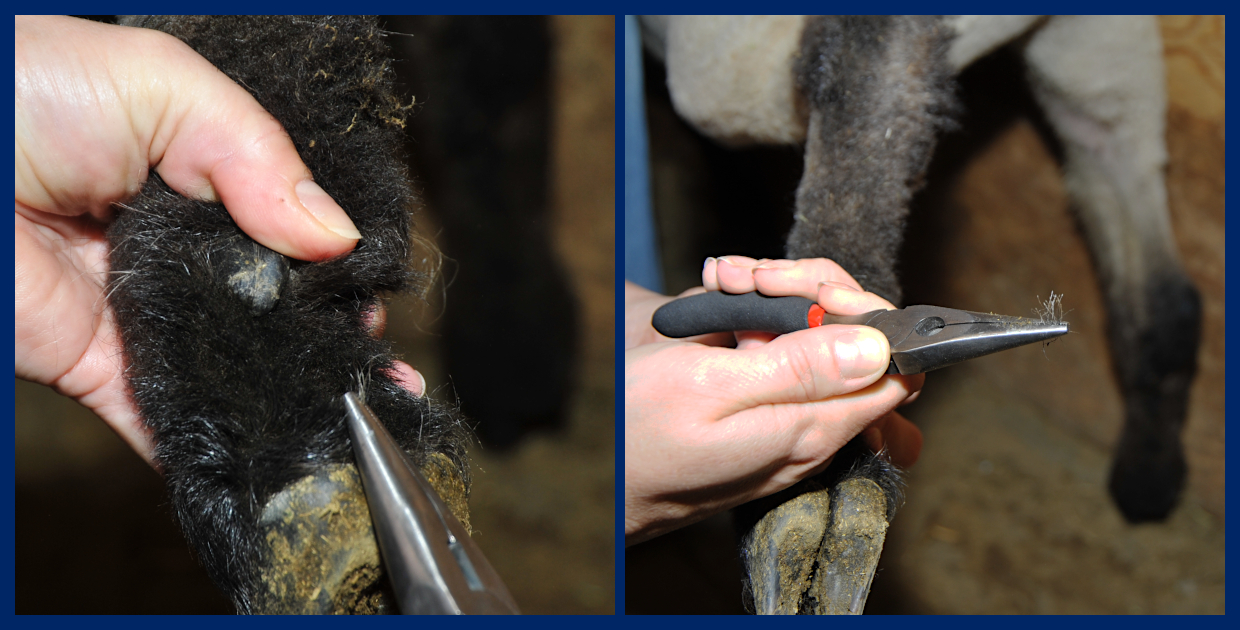Quick Summary
Click here for Price and Turnaround Time
Phenotype: Ovine hereditary chondrodysplasia (spider lamb syndrome) is associated with skeletal deformities in young sheep. Structural abnormalities observed in afflicted lambs include facial defects, humped or twisted spines, abnormally long legs, bent and/or splayed legs, flattened ribs, and an underdeveloped musculature. While the deformities may not be apparent at birth, they are often visible by 4-6 weeks of age.
Mode of Inheritance: Autosomal recessive
Alleles: N = Normal/Unaffected, S = Spider lamb syndrome
Breeds appropriate for testing: Suffolk, Hampshire, Southdown, Shropshire, Oxford, and other breeds and crossbreeds derived from Suffolk stock in the US
Explanation of Results:
- Sheep with N/N genotype will not have spider lamb syndrome and cannot transmit this spider lamb syndrome variant to their offspring.
- Sheep with N/S genotype will not be affected by spider lamb syndrome, but are carriers. They will transmit this spider lamb syndrome variant to 50% of their offspring. Matings between two carriers result in a 25% chance of producing a lamb with spider lamb syndrome.
- Sheep with S/S genotype will have spider lamb syndrome, a semi-lethal disorder associated with skeletal deformities.
Sample Collection
Most of the sheep DNA tests offered by the VGL are carried out using cells from the roots of a hair sample (roughly 20-30 hairs).
Hair samples should be coarse hair from hoof or body areas.
Instructions

1. Clean (use comb if possible) by removing all loose hair and foreign matter.
2. Use fingers or pliers to grasp approximately 8-10 hairs close to the skin and pull. Pull (do NOT cut) hair strands. Examine the end of hair strands for presence of root bulbs. Hair roots are necessary for DNA testing. If the majority of hair strands lack the root bulbs, discard hair and start again.
3. Repeat until you have approximately 20-30 hairs with root follicles attached.
4. Place the 20-30 hairs with root follicles attached in the envelope and seal with the animal’s ID written on the envelope.
5. Repeat steps 1-4 for each additional animal being sampled.
Note:
- Hair should be dry.
- If hair has excess dirt and debris, please brush out if possible before pulling hairs for sample.
- Do not cut the hair! The roots contain the DNA for testing.
- When sampling several animals in the same session, make sure that there are no hair strands in your hands to reduce the possibility of sample contamination. Clean hands and/or pliers if possible.
Ovine hereditary chondrodysplasia (spider lamb syndrome) is a semi-lethal inherited disorder associated with skeletal deformities in young sheep. Structural abnormalities observed in afflicted lambs include facial defects, humped or twisted spines, abnormally long legs, bent and/or splayed legs, flattened ribs, and an underdeveloped musculature. While the deformities may not be apparent at birth, they are often visible by 4-6 weeks of age. These combined musculoskeletal defects were first observed in black-faced lambs in the mid 1970’s.
Research into the cause of spider lamb syndrome identified a mutation within the gene for fibroblast growth factor receptor 3 (FGFR3). Because the syndrome is a recessive genetic disorder, a lamb is only afflicted if both parents pass on the mutation. Thus, it is critical to identify carriers of the mutation. Carriers (animals with only one copy of the mutation) are structurally normal with no evidence of disease.
Test results allow breeders to select appropriate breeding pairs to eliminate this condition from their herd.



